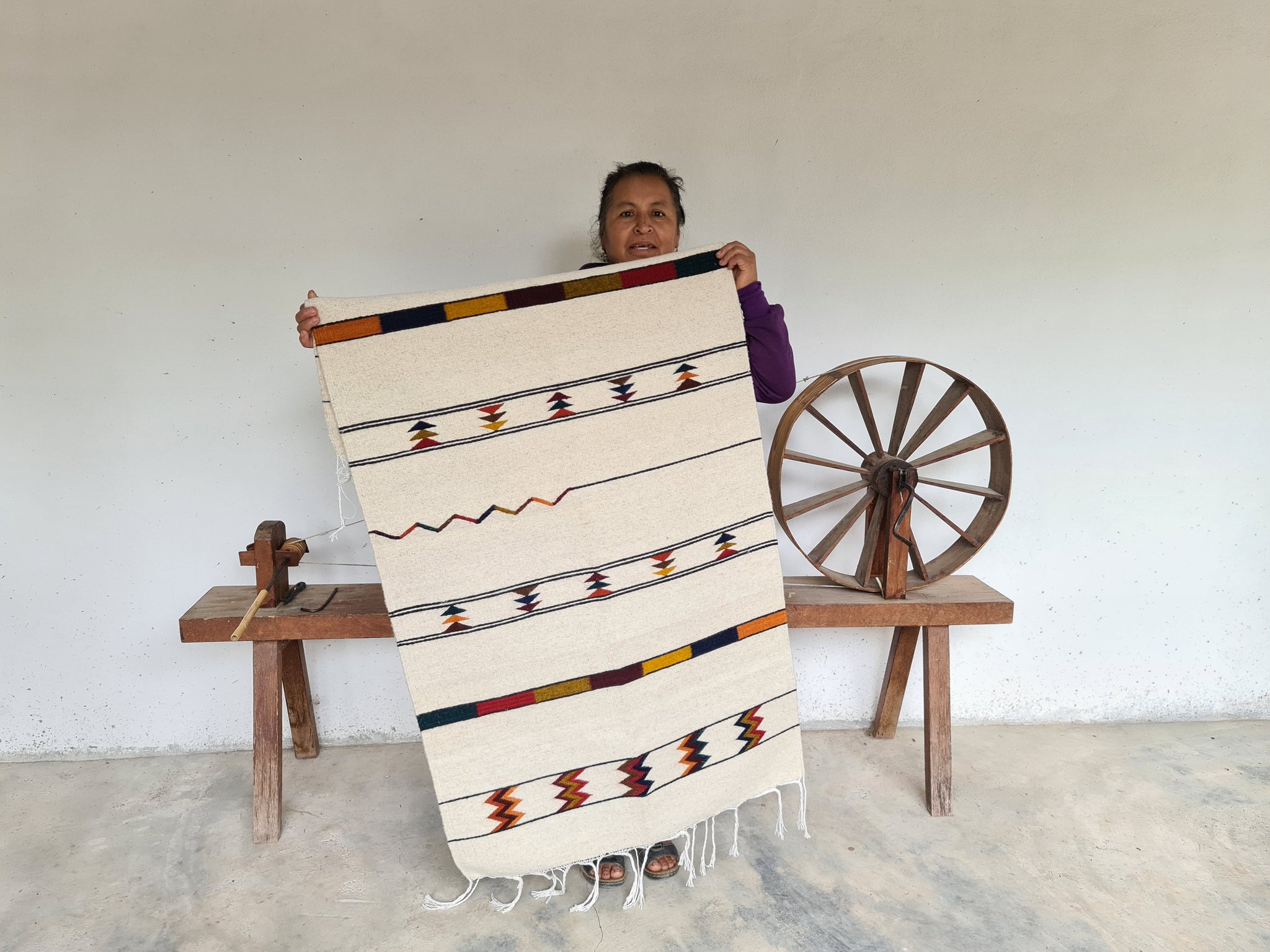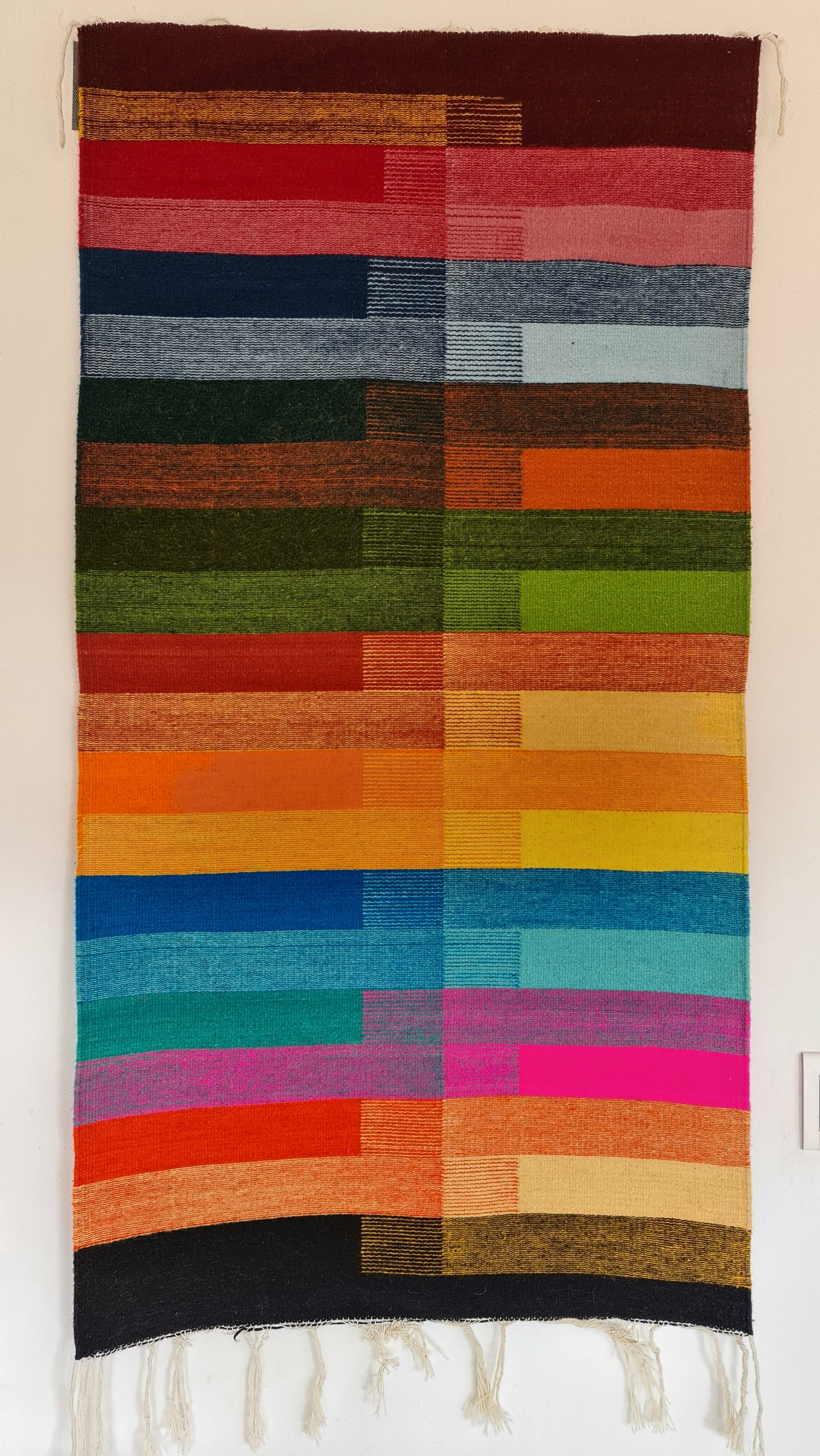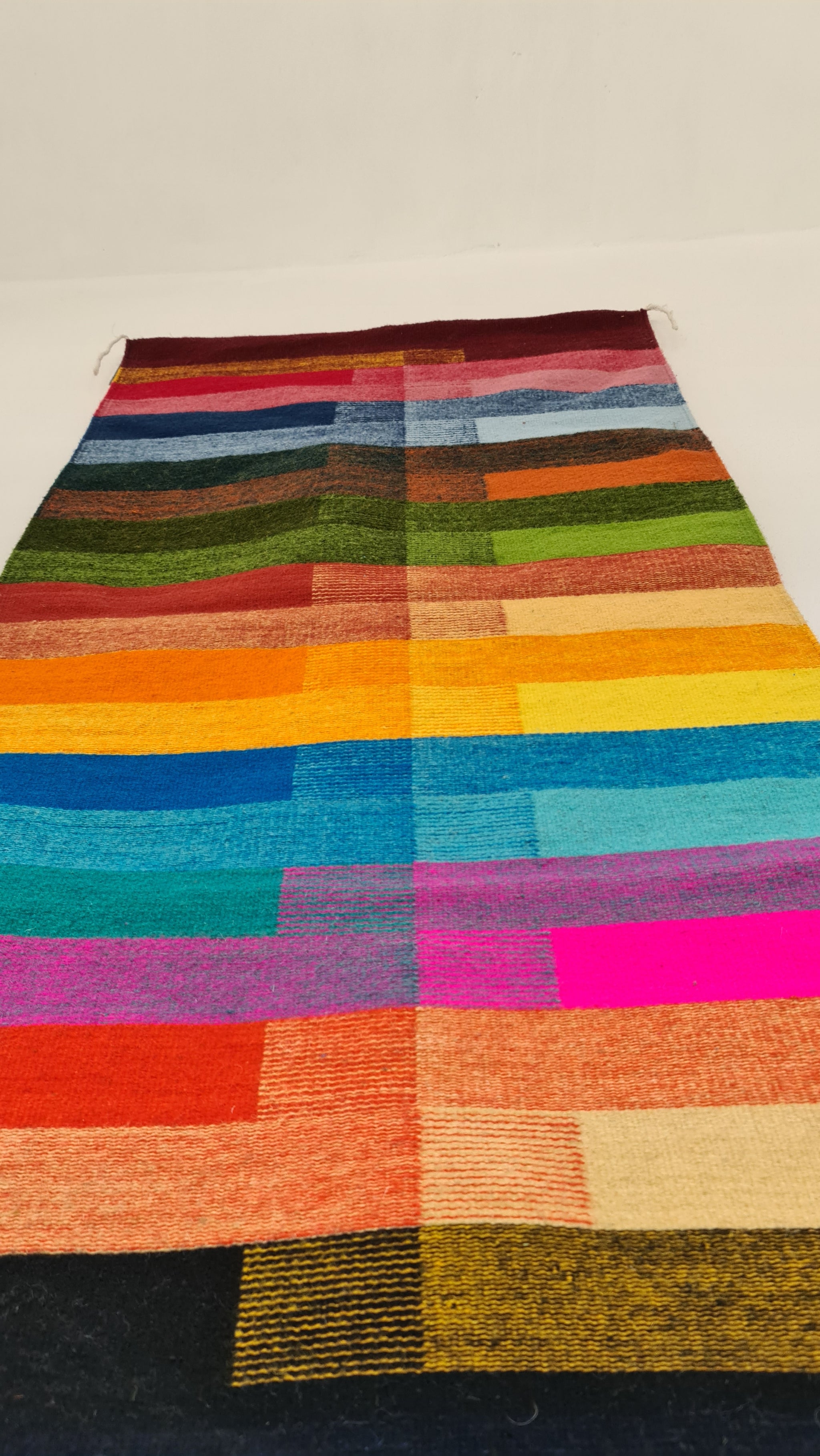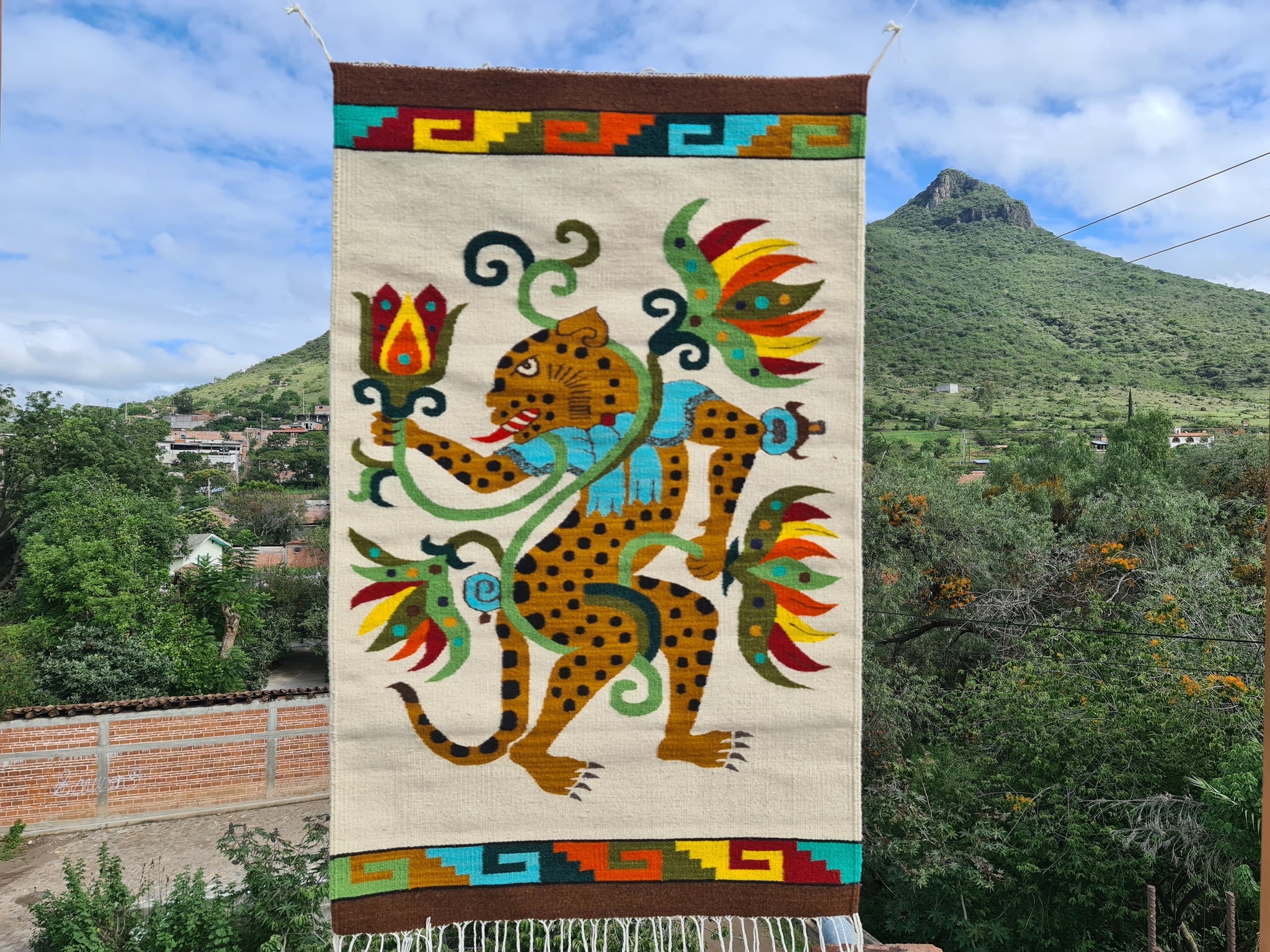Size: 60x180cm 24x71in
Criollo sheep wool dyed with indigo.
This is a collaboration rug between Samuel Bautista Lazo, Benizaa, Cloud People (Zapotec) with Tiśina Ta-till-ium Parker of Southern Sierra Miwuk of Yosemite, Mono Lake Kucadikadi Paiute and Kashia Pomo; two weaving cultures meet in blue dreams. Tiśina holds a BFA in Sustainable Fashion/Textile design. Tiśina comes from a family of notable California Native Traditional Basket Weavers of Yosemite. Her family's basketry work has been featured in The Smithsonian Museum, Heard Museum, among others & has been coveted by collectors world wide. This is the very first rug we have woven together as a symbol of weaving our cultures together, her people still gather and process acorns in the ancestral ways. My people gave up acorn processing for corn cultivation, but in the sacred mountain where our village was founded there are still acorn/corn grinding holes around a site that has several types of oak trees growing near by. I have learnt that we must remember our ancient knowledge to have the connection with the land in case Climate Chaos or another human caused crisis turns into many of the cataclysms that destroyed the previous four world inhabited by humans in our cosmology. Self sufficiency and and self reliance will be key, our corn fields last year produced only 20% of the corn that my grandfather used to harvest. Even the Oak trees did not produce much acorn due to the low rains of the season, but as a perennial tree they have a much better advantage and a necessary conection must be woven.
My mom and I dyed some yarns following Michel Garcías Mango recipe described in his DVD Natural Dye workshop II: colors of the Americas on wool fibers using sustainable methods. I bought this DVD at a yarn shop in California, to find out our people were featured in it. There is a lot of irony in the circlings of life. Our people in our community are so secretive about their methods and techniques within our village given the competition within families to produce and sell rugs but we are so willing to share our knowledge with the outside world as a way to make a name for ourselves and get recognised. I love the work of Michel Garcia and praise the work he is doing for preserving and expanding the knowledge of Natural dyes, but I have to say I did not feel so comfortable seeing how he showed some of our techniques after he learnt them from local families in our village. Time and time again Europeans have showed up here to gather plants, extract knowledge and totally appropriate it as theirs, so it is a careful walk on treacherous lands. He did mostly a good job pointing out to European methods and his own version of each method. Ironically, given the fact that some of the plants that we used historically as mordants are not cultivated or tended for in the wild anymore so we end up using alum as a mordant which is the European Method.
The times we are living on the earth call for great action to change our Ecocidal behaviour to restorative actions that balance our relationship with the life support systems of the earth. Like the Native Turtle Islanders and Cem Anahuac people say, in times of struggle we all become the rainbow people and come together in unity and harmony to face the big challenges of life. Many streams of native culture are coming together to reunite in larger streams and rivers to bring together the breath of our ancestors and create a song and a prayer so lound that the earthlings will synch and awake to care for our mother earth again.
This rug is about the color blue, dyed with Xiuhquilitl (our native indigo). The blue represents all these streams of water that are reuniting and coming together from all the four corners, each stream is bringing its own hue, texture, saturation, contamination, trauma, nutrient, lack of nutrient...etc but in the union of them all there is the immensity and calmness of the big Oceans that we call Niisdou, which literally means the calm and immense waters.






























